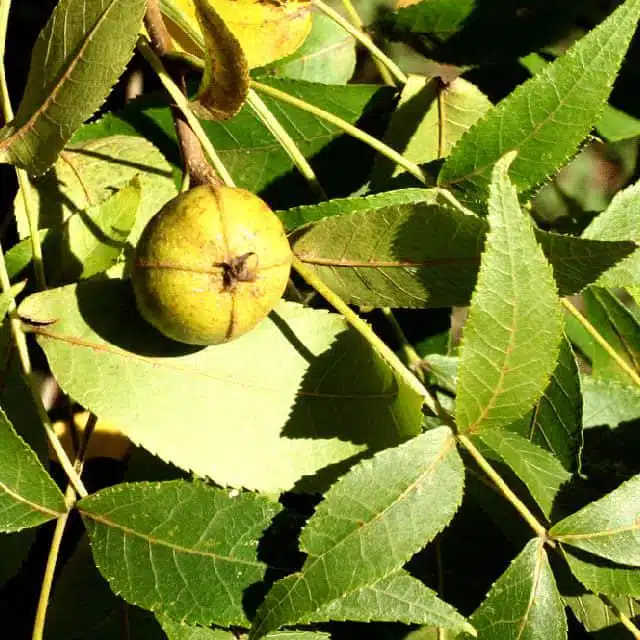Carya cordiformis, commonly known as the Bitternut Hickory or Swamp Hickory, is a tall and majestic deciduous tree native to North America. It belongs to the walnut family (Juglandaceae) and can be found in various habitats such as floodplains, wetlands, and bottomlands.
This impressive tree can reach heights of up to 100 feet (30 meters) and has a spread of about 50 feet (15 meters). It is characterized by its straight, stout trunk and a broad, rounded crown with dense foliage. The bark is dark gray and develops deep furrows and ridges with age.
The compound leaves of Carya cordiformis are pinnately compound, consisting of 7 to 9 leaflets, which are lanceolate or oblong in shape. The glossy, deep green leaves turn a beautiful golden yellow in the fall, adding a stunning display of color to the landscape.
In spring, Carya cordiformis produces separate male and female flowers. Male flowers are yellow-green catkins, while female flowers form in small clusters. These flowers are wind-pollinated, and once fertilized, they develop into small green fruits that mature to become nut-like structures known as hickory nuts. The bitter taste of these nuts gives the tree its common name, Bitternut Hickory.
Carya cordiformis provides valuable wildlife habitat, attracting a wide variety of birds and small mammals that feed on its nuts. The hard, durable wood of this tree is also highly sought after for various applications such as furniture, tool handles, and flooring due to its strength and attractive grain pattern.
With its majestic stature, beautiful foliage, and ecological significance, Carya cordiformis is a cherished tree that adds both beauty and functionality to its natural surroundings.
